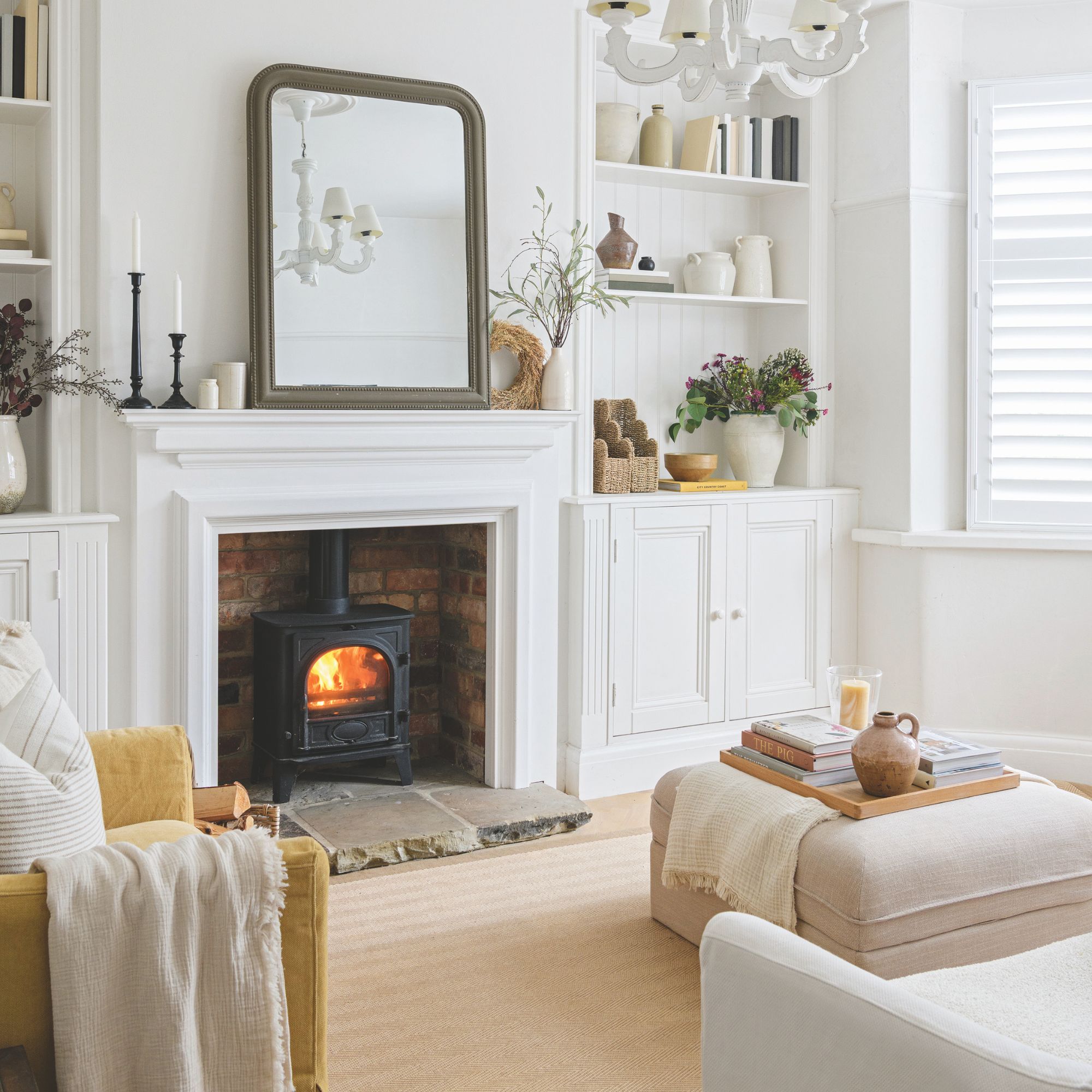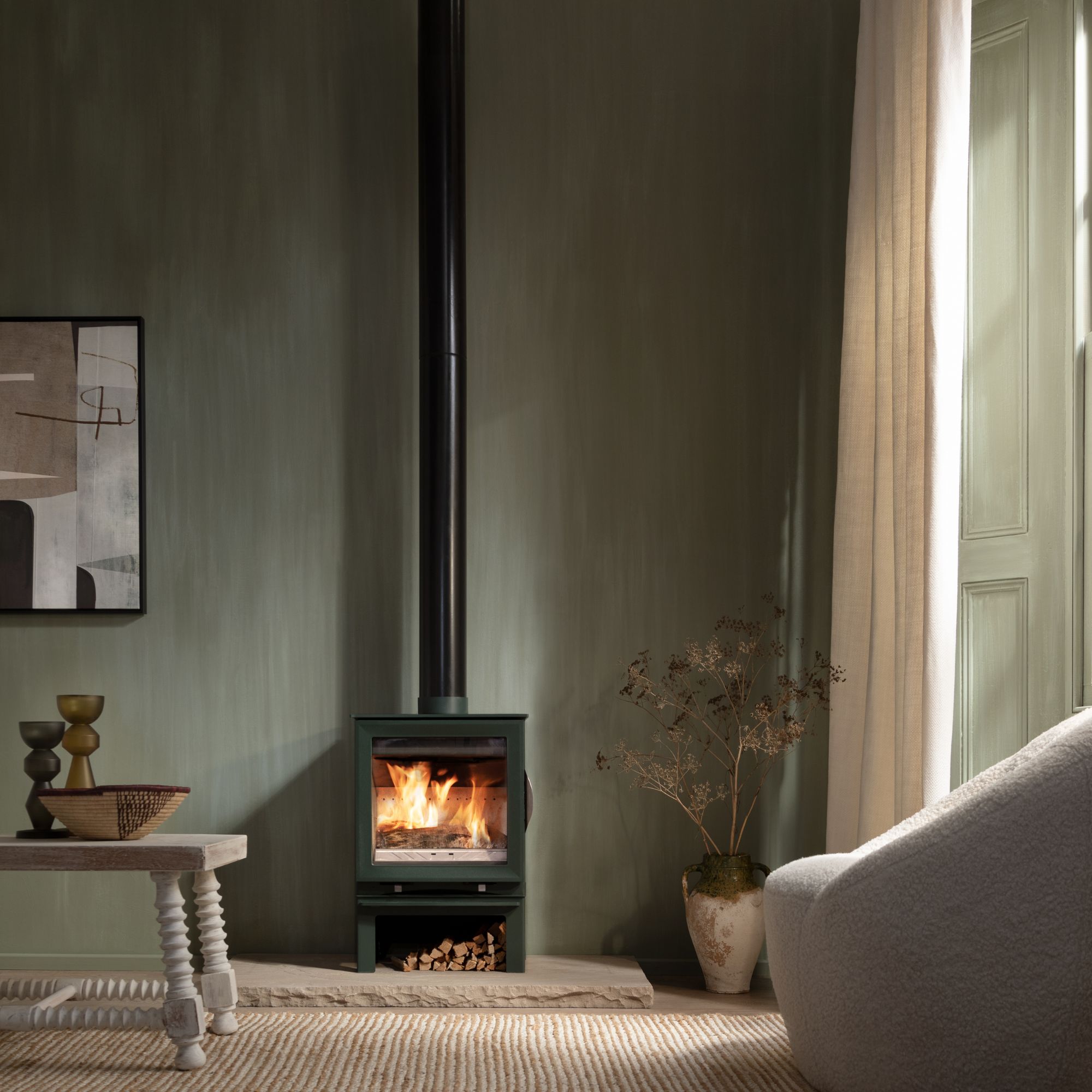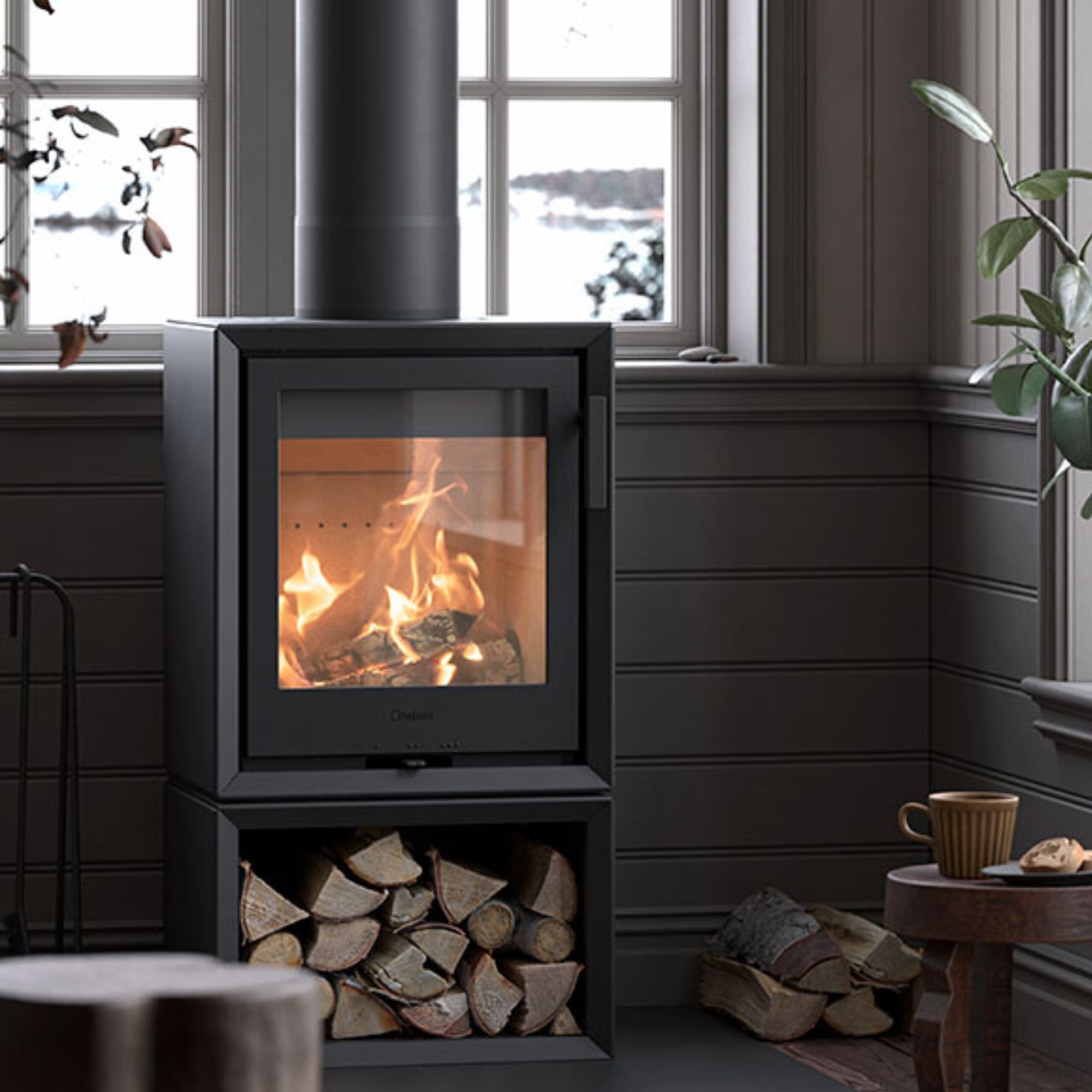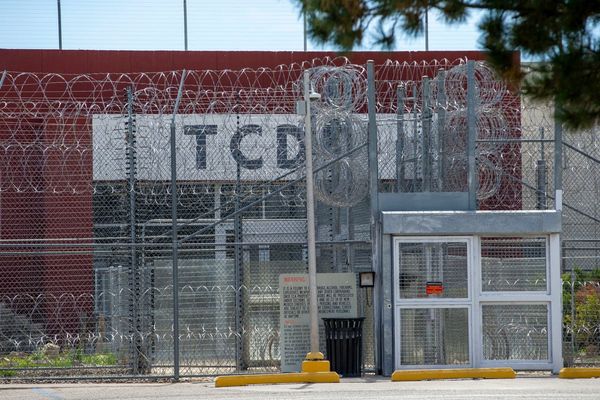
If you're thinking about adding a woodburning stove to your home this winter, it's important you understand what size log burner you need to create the ultimate cosy environment.
There's a lot to consider when choosing a woodburning stove, including what kind of ventilation a log burner needs, plus the log burner building regulations you'll need to meet. But having the right size log burner is crucial. Too big and you'll overheat quickly, too small and it won't warm your space adequately.
I spoke to the stove experts to find out how you determine the right size burner for your space.
What size log burner do I need?

There are multiple reliable options to determine what size log burner is right for your home. More than the physical dimensions of the stove itself, the optimum size will come down to the appliance's heat output.
- Use a stove calculator. 'To find the best size for the space, look for a fire supplier that offers a stove calculator,' says Joanna Humphreys, Fire and Stove Specialist at Direct Stoves. 'You simply put in your room’s measurements and insulation type to find out what size log burner is best for the space.'
- Ask a reputable expert. Before you buy a woodburning stove, it's a good idea to shop around, especially in person. When you do, don't be afraid to take a list of questions to put to the showroom experts. They'll be more than happy to help you choose the right size and design for your home.
- Do your own calculation. To get an idea of the size burner you need, you can do a relatively simple calculation yourself. This is especially useful if you are looking to get a sense of how much your log burner will cost. 'Be sure to measure your room's dimensions and consider the insulation level, such as if you have carpet and double-glazed windows,' says Jon Butterworth, Director at Arada Stoves. 'To give you a starting point for finding the right stove output simply measure the room volume (width x length x height) in metres and divide the result by 14. This will give you a rough guide to the ideal kW output needed for that room.'
'Roughly you need around 1kw for 14 cubic metres,' adds Brian Athey, MD at Carron Stoves. 'This is based on average insulation, so you might need to consider adjusting this if you have excellent or poor insulation. (+/- 10% accordingly).'
Can a wood burner be too big?

It is definitely possible to choose a log burner that is too big for your home.
'Often a stove is chosen to match the fireplace, hearth or style of room it is to be fitted in, however the most important factor in choosing the right size stove is getting the right output to ensure you will not be too hot,' explains Jon. 'An oversized stove for example can overheat your space, causing discomfort and even potential fire hazards which we don’t want.'
'Choosing the right appliance is essential for comfort, efficiency and the environment,' adds Simon Bower, Technical Director at Percy Doughty. 'If the appliance is too big, the room can overheat and potentially lead to issues with the building fabric, it may encourage the user to slumber (burning the stove at a low rate for long periods) this can have a negative impact on the installation whole, particularly the chimney system...'
What happens if you choose a log burner that is too small?

Choosing a log burner that is too small has it's own set of downsides. Not only will it prevent you from creating that lovely cosy atmosphere, and leave you chilly. But it can also have a negative impact on both the appliance and your energy bills.
'If the stove is too small, it will fail to deliver the required heat needed,' says Simon. 'It will become costly because you will burn more fuel to compensate for the low heat output, and the stoves lifespan will become significantly reduced given that it will always be operating at its maximum.'
But selecting the correct size log burner can ensure you reap all the benefits and dodge the downsides. 'The aim when choosing any stove is to make sure it can run at its nominal output (its normal, efficient operating level) comfortably, maintaining the temperature it’s designed for, while working in balance with your home’s main heating system not overpowering or underperforming,' concludes Simon.
FAQs
What size room with a 5kW log burner heat?
'As a general rule of thumb, a 5kW stove will heat an average living room of around 20m², while 6-7kW models are better suited to larger or open-plan spaces,' explains Phil Wood, UK Managing Director of Contura.
If you are hoping to add a log burner to a small space, then look for models with a heat output of 4kW or less if you want it to work most efficiently (and prevent you from overheating.'
For even larger, open-plan spaces, you can get stoves with an output in excess of 10kW.
What should you look for when choosing a woodburning stove?
In addition to the size and heat output of a log burner, there are several other factors that should be considered when making your decision.
- The type of stove. Radiant, convection, multi-fuel, boiler or pellet — there are different types of burners available, so you'll need to choose the one that's right for your home.
- Design. Log burning stoves are available in a multitude of colours, and in both traditional and contemporary styles, to suit any home.
- Efficiency. 'When it comes to the environment, an Eco Design stove, approved for use in a smoke controlled areas, in accordance with the Clearskies, or Cleaner Choice schemes means that the chosen stove meets and exceeds specific measures relating to their energy efficiency and emissions,' explains Simon.
- Building regulations. Speaking with an expert can help you understand the installation process to ensure your log burner meets the standards laid out in the building regulations.
- Local rules and requirements. If you live in a Smoke Control Area, there may be limitations on the kinds of fuel you can burn, so it's important to check this when shopping for a burner.
Are you a keen DIYer? Make sure you understand just how complex it can be to install your own log burner before you attempt it.







